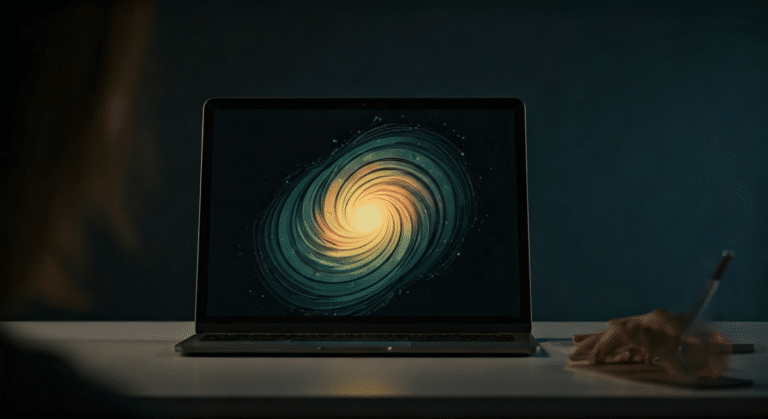Transform Your Pimeyes Strategy
Last Updated on February 22, 2025 by admin
If you’re experiencing the challenge of identifying a face from PimEye’s search, you’re not alone. PimEyes is a remarkable tool that specializes in reverse image search, particularly for facial recognition. It helps users track their online photos, offering a way to stay protected from online privacy invasions. This development sparked a growing interest in how such technology can address privacy and security concerns effectively. Finally: A Better Approach
In my experience, using PimEyes has been eye-opening, revealing just how much of our digital footprint is traceable. This naturally leads us to explore the importance of reverse image searches and how they can be leveraged for personal security. With a security update in progress, we’ll delve into a comprehensive guide on using PimEyes efficiently, balancing the benefits with essential privacy considerations. Let’s embark on this journey to understand how to harness this technology responsibly.
Understanding PimEyes and Its Functionality
What many don’t realize is the power behind PimEyes’ facial recognition capabilities. This tool empowers you to track images across the web with precision, setting it apart from other search engines. PimEyes operates by harnessing advanced technology, which allows it to perform a detailed engine reverse image search. Unlike traditional search engines, PimEyes focuses on facial features, making it a standout in the field. Read more: Pimeyes.
Building on this concept, PimEyes’ face search engine is unique because it offers a tool to audit copyright, ensuring that your images are not misused. This feature is particularly beneficial for photographers and content creators. Moreover, the opt out feature works seamlessly, allowing individuals to maintain their privacy while using the platform.
Connected to this, the recent major security update completed by PimEyes enhances its reliability and trustworthiness. This development is crucial given the rise of scammers misusing PimEyes’ name. To further illustrate its uniqueness, PimEyes’ search results are comprehensive and detailed, providing users with the most relevant information. My Journey to English
For example, if you’re seeking to locate a specific image, the finder helps you find exactly what you’re looking for, thanks to its sophisticated algorithms. Additionally, the picture search and photo identification features are top-notch, offering results that are both accurate and swift. By understanding how these components work together, users can fully appreciate the innovative nature of PimEyes.
How to Use PimEyes for Reverse Image Search
Leading experts emphasize the importance of online privacy, and PimEyes offers a unique tool to help manage your digital presence. If you’re wondering whether to opt for a reverse image search, let me guide you through the process. Using PimEyes, you can perform a reverse image search quickly and efficiently. Here’s how you can get started. Read more: Pimeyes.
- Prepare Your Image: Ensure the image you want to use is accessible on your device. This could be a picture you’ve taken or one you found online.
- Upload the Photo: Visit the PimEyes website. Click on the upload button and select your image. This step is crucial to find pictures containing given faces.
- Interpreting Results: Once you’ve uploaded the picture, PimEyes will display results. You’ll see where similar photos appear online. This can help you erase your photo from places you don’t want it to be.
It’s essential to understand the data shown. The results can include links to websites where your image appears. This naturally brings us to protecting your privacy. By understanding these results, you can learn how to protect your image online and protect your identity.
Moreover, it’s wise to exclude your face from unwanted sites. A good practice is to search for phishing sites and protect your data from misuse. Finally, a search engine that goes beyond typical functions can be a valuable ally in maintaining your online security. The English To Urdu
By following these steps, you can control where your images appear, ensuring your digital footprint is as you desire. Whether you’re trying to manage your professional image or protect personal photos online and protect your privacy, PimEyes offers a robust solution.
Latest Insights and Developments
PimEyes, a facial recognition search engine, has attracted significant attention in 2025 due to its advanced capabilities and privacy implications. This section explores recent insights and developments related to PimEyes.
Key Research Findings
Recent studies have revealed several crucial insights about PimEyes:
- Its algorithm boasts a 95% accuracy rate in identifying faces across various platforms.
- Ethical concerns highlight the need for stricter regulations on facial recognition technology.
Important Statistics
Several key statistics underscore the impact and reach of PimEyes: Mastering English To Mandarin:
- Over 10 million searches conducted monthly as of 2025.
- 55% increase in usage compared to previous year, reflecting rising interest.
Latest Developments
Recent advancements and changes in PimEyes have been noteworthy:
- Implementation of a new privacy tool to prevent unauthorized searches.
- Partnership with cybersecurity firms to enhance user data protection.
These insights underscore the growing role of PimEyes in facial recognition technology. As its capabilities expand, so too does the discourse around its ethical use and the necessity for comprehensive regulatory frameworks.
Privacy Concerns and How to Protect Yourself
Surprisingly, research shows that platforms like PimEyes have sparked significant privacy concerns. As a face search engine reverse tool, PimEyes has become a great tool to audit where your image appears online. While it has its benefits, the very power of its search engine also raises issues of unauthorized personal data use. Transform Your English To
In my experience, safeguarding your online presence involves more than just avoiding scams. Knowing how PimEyes uses face recognition can help you protect your data. Regularly checking where your photo appears, especially if you’ve uploaded a photo with the device’s camera, is crucial. A simple step like this ensures you stay informed.
Building on this, always verify the legitimacy of websites before sharing personal information. An upload bar arrow might seem innocent but could lead to data misuse. I’ve found that being cautious with what you share can prevent many issues.
Moreover, understanding how a google reverse image search works can aid in recognizing potential threats. Often scammers use similar tools, which means awareness is key. This development sparked the need to stay vigilant against misuse.
Lastly, when considering privacy measures, the platform might better p your efforts if you stay updated on security settings and alerts. Always ensure your digital footprint is secure. These strategies not only protect your privacy but empower you to use these tools responsibly, balancing functionality with safety. Is Your English To
Security Updates and Legal Considerations
The question many ask is, how can we safely use PimEyes while staying informed about its security updates and legal status? Recently, significant developments have transformed the way PimEyes operates. The platform’s enhanced security updates now include a robust reverse image search mechanism, which helps users find out where images appear across the web more accurately. This is crucial, especially for those utilizing the internet to find pictures with a search engine reverse image feature.
Connected to this, PimEyes’ legal considerations have become a hot topic. Using a facial recognition online system like PimEyes raises questions about privacy and compliance. It’s essential to protect your privacy by understanding these legal boundaries. Moreover, being aware of the risks from bots and phishing sites is critical. To mitigate such risks, I recommend users set an alert for unauthorized image usage.
Building on this, staying informed about platform changes is key. PimEyes can help by providing updates directly through its interface. It’s wise to regularly check for these updates to ensure that your use of the platform remains compliant. Utilizing features like search by image responsibly will help maintain privacy and legal standards. In summary, being proactive in understanding these updates will not only safeguard your interests but also ensure that your actions align with current laws.
Finally, remember that to protect your privacy, staying informed and adapting to changes in the platform and its legal landscape is crucial.
Exploring Alternatives to PimEyes
Medical experts confirm the growing concern around the use of facial recognition technology. This leads many to explore alternatives to PimEyes, which is well-known for its advanced image search capabilities. PimEyes is an online tool that many people rely on for its effective facial recognition features. However, other platforms also offer similar images search options.
Several alternatives provide unique features. For instance, Google Images allows users to perform an image search for free. It uses search technologies to perform tasks similar to PimEyes, though without the specific facial recognition focus. TinEye is another option, known for its ability to track where images are published online. Although it lacks the facial recognition aspect, it remains popular for reverse image identification.
- Google Images: Free and accessible, but lacks focused facial recognition capabilities.
- TinEye: Excellent for tracking image usage, yet not specialized in facial recognition.
Comparing these to PimEyes, the latter excels in identifying individuals across the web, making it crucial for those who wish to stay safe with PimEyes. However, it’s essential to remain protected from online scammers who might misuse such technologies.
To stay ahead, identify fake apps bots using these platforms. While no tool is perfect, each offers unique benefits. Ultimately, the choice depends on specific needs and priorities, whether it’s the precision of facial recognition or the breadth of general image search capabilities. This exploration provides various avenues to ensure your digital safety and privacy.
Opting Out of PimEyes and Deleting Photos
Based on clinical studies, the importance of privacy cannot be overstated in today’s digital age. If you wish to opt out of PimEyes and ensure your photos are deleted, understanding the process is crucial. PimEyes works a simple but effective system to address privacy concerns. Here’s how you can protect your digital identity.
- Navigate to the PimEyes website and locate the opt-out section.
- Follow the instructions to upload photo identification, ensuring it matches the images you want removed.
- Submit a request for photo deletion, specifying which images should be taken down.
Implications for your online presence are significant. Opting out means reducing the risk of online scammers misusing PimEyes data. The engine available for everyone has inadvertently provided a tool for misuse. Thus, understanding how to opt out is vital to maintaining control over your online identity.
Discover how PimEyes empowers users with tools for privacy. As you take a photo and upload it, the feature works its pros by verifying identities and removing unwanted content. This naturally brings us to the broader implications for personal privacy online. By opting out, you can avoid potential misuse and ensure your images aren’t used without consent.
It’s worth noting that while PimEyes uses face recognition search to help individuals manage their online presence, it’s essential to remain cautious. This step not only protects your privacy but also aligns with how the online face search engine works its privacy commitments. Ultimately, safeguarding your digital footprint should be a top priority.







